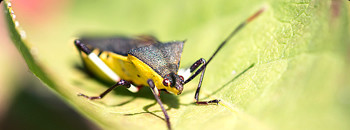
Golf is a huge part of American culture. Whether you play golf professionally, recreationally, or to close business deals outside the office, it is a part of many of our lives, and even helps our economy grow. Today we celebrate National Golf Day, but for reasons that may not immediately come to mind.
Debug the Myths went behind the scenes and interviewed golf superintendent Jim Ferrin to find out a little about why turf management is important to recreational and professional golf players and the integrated approaches that keep the greens in healthy, playing conditions.
Q: What inspired you to become a golf superintendent?
Ferrin: I grew up playing baseball, but I played golf for the first time one summer when I was 12, and I fell in love. I never considered a career in golf because I didn’t think I was good enough to play professionally, but I found a job at a golf course and I enjoyed it. The rest is history.
Q: How important is turf quality to the game?
Ferrin: Poor performances are sometimes blamed on poor turf conditions. If turf conditions are not presented well, people would not play.
Q: In what ways do you use an integrated pest management approach for pest and weed control on your course?
Ferrin: When using integrated pest management, the first thing we look at is the soil. If the soil is healthy, we look at irrigation and then assess next steps. Proactively monitoring potential trouble areas is the best way to maintain an integrated approach. I also look at historical documents from my golf course and other similar courses to determine what products to use if there is a need to solve a more threatening problem. Without using some turf products, there wouldn’t be a way to combat weeds that could affect the health of the turf, the quality of play and even our naturalized areas that are homes to so many species of wildlife.
Q: What do you do to provide players with the best playing conditions?
Ferrin: One way is by always keeping grass seed on hand and introducing new and improved products to the turf. I’ve always been an early adopter of technology because there might be a new product out there that is better for the turf but may also be less expensive or more efficient. Staying on top of new technologies has really helped me be successful in my career.
Q: Tell us about a time when you made a significant accomplishment in turf improvement and how you accomplished the feat.
Ferrin: We’ve had several challenges with reclaimed water and how the water was being irrigated. The key to improving turf is by maintaining soils, having the right crop of grass, proper irrigation and setting a good fertility schedule. One of my biggest accomplishments is seeing complete turf transformation on high-end facilities. The community takes great pride in the courses they play on. The turf, slowly but surely, went from weedy to playable.
Q: If you could tell consumers one thing or dispel one myth about turf grass, what would it be?
Ferrin: Pesticide and fertilizer products are safe when applied correctly and at the appropriate level. I try to teach my community ways to manage grass safely and also give lawn nutrition advice. If I can make the right influence, then the community can see how safe and effective these types of approaches are to their lawns.
Jim Ferrin celebrates National Golf Day every day through his lessons and accomplishments. He says turf is ever evolving, and the top priority is giving the golfers top playing conditions. To see more of Jim Ferrin and get a behind the scenes look at Timber Creeks Golf Course, click here.

